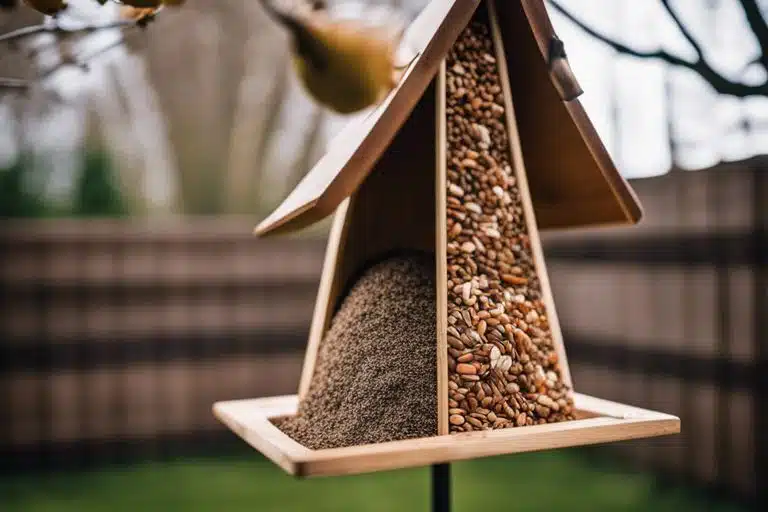Most households have everyday items that can be repurposed to create simple homemade bird feeders, allowing you to attract and nourish beautiful birds in your backyard easily. In this guide, we will provide step-by-step instructions on making functional and cost-effective bird feeders using materials readily available in your home. From plastic bottles to old containers, get ready to initiate on a fun and eco-friendly DIY project that will bring joy to your feathered friends.

Key Takeaways:
- Reuse and Recycle: Consider making a bird feeder from recycled materials for an eco-friendly project. Household items like toilet paper rolls, pine cones, and milk cartons can be repurposed into bird feeders, promoting sustainability.
- Easy DIY Project: Making homemade bird feeders is a simple and fun activity for both kids and adults, requiring minimal materials and effort.
- Attract and Support Birds: Homemade bird feeders provide a food source for birds, using easy homemade bird feeders creates opportunities for bird watching and connecting with nature.
Gathering Your Materials
Household Items You Can Use
If you’re looking to create simple homemade bird feeders using items around your home, you’re in luck with these make-your-own bird feeder ideas, like a cookie cutter bird feeder or a suet bird feeder. There are several common household items that can be repurposed for this project, such as a soda bottle bird feeder or a mason jar bird feeder. Items such as empty plastic bottles, milk cartons, toilet paper rolls, and even popsicle sticks can all be transformed into bird feeders with a little creativity and effort.
Tips for Choosing Safe Materials
When deciding on materials for your homemade bird feeders, it’s important to consider the safety of the birds that will be using them, ensuring that the bird feeder is easy for them to access. Avoid using materials that are sharp, toxic, or can easily break apart when crafting your easy to make bird feeders, including safe suet bird feeders. Opt for non-toxic paints and glues, as well as materials that are durable and weather-resistant. The last thing you want is to harm the very creatures you’re trying to help inadvertently, especially when crafting peanut butter bird feeders or jug bird feeders meant to feed birds safely.
- Choose materials that are non-toxic and safe for birds.
- Avoid sharp edges or materials that can easily break, especially when creating bird feeders for kids.

How-To: Building the Bird Feeder
Despite the plethora of bird feeders available for purchase, making your own can be a fun and rewarding experience, particularly with mason jar or bottle bird feeder ideas. For a family-friendly activity, check out these homemade bird feeder ideas, which include simple bird feeders and bird feeders for kids. Easy and Eco-friendly Bird Feeders to Make with Kids.
Step-by-Step Guide to a Basic Feeder
Assuming you have gathered all the necessary materials, constructing a basic DIY bird feeder can be a simple process and a fun bird feeder project. Follow the table below for a step-by-step guide:
| Step | Instructions |
| 1 | Gather materials: plastic bottle, scissors, string, bird feed |
| 2 | Cut holes in the bottle for birds to access the feed, an essential step in your make your own bird feeder project. |
| 3 | Insert string through the bottle bird feeder and hang it in a tree for an easy-to-make bird feeder solution, a great activity for kids. |
| 4 | Fill the bottle with bird feed and watch the birds enjoy! |
Tips for a Successful Construction
Even though building a bird feeder is a simple task, there are some tips to ensure a successful construction, which kids to make bird feeders should also consider.
- Choose a sturdy material for the feeder to withstand outdoor elements
- Hang the feeder in a quiet and safe location for birds to feed undisturbed
The key to a durable and functional bird feeder lies in the quality of materials and placement.
Understanding
In order to attract a variety of bird species, consider offering different types of bird feed such as seeds, suet, and nectar, especially considering easy homemade bird feeders during winter. Understanding the dietary preferences of local birds can help you provide the best food options, such as bird seed, for your feathered visitors.

Filling and Maintaining Your Bird Feeder
What to Feed the Birds
Birds can be attracted to your homemade bird feeders with a variety of foods, including a simple suet feeder or a cookie cutter bird feeder. Some popular options include sunflower seeds, millet, cracked corn, and suet. Different bird species have different preferences, so offering a mix of bird seed and grains will attract a greater variety of birds to your feeder, particularly when utilizing easy bird feeder designs.
Keeping Your Feeder Clean and Safe
If you want to successfully attract birds to your feeder, it is crucial to keep it clean and safe. Bird feeders for the yard, including cone bird feeders and cup bird feeders, can quickly become breeding grounds for bacteria and mold if not maintained properly. Regularly clean out old seeds and debris, and wash your feeder with a mild bleach solution at least once a month to prevent the spread of disease among the bird population in your area.
To ensure the safety of the birds visiting your feeder, also make sure there are no sharp edges or points on your homemade feeder that could potentially harm the birds. Position your feeder in a safe location away from predators like cats, and regularly check for any signs of wear and tear that could pose a risk to the birds, making your bird feeder project safe and sustainable.
Placement and Observation
Tips for Placing Your Bird Feeder
For optimal bird watching, place your bird feeder in a quiet area that is easily accessible to birds. Ensure the feeder is at least five to six feet off the ground and positioned near trees or shrubs where birds can perch and feel safe while feeding. Avoid placing the feeder too close to densely grown vegetation that may attract predators such as cats. The location should also provide easy visibility for you to observe the feeding activity.
- Choose a location away from high-traffic areas to prevent disturbances, an important consideration when placing bird houses or peanut butter bird feeders.
- Keep the feeder within your line of sight for convenient monitoring.
- Clean the area around the feeder regularly to prevent seed accumulation that may attract unwanted pests, a necessary maintenance step for any bird feeders for the yard, including pine cone bird feeders.
The positioning of your bird feeder plays a crucial role in attracting a variety of bird species while ensuring their safety and your viewing pleasure. Observing proper placement practices will enhance the bird-watching experience for both you and your feathered visitors.
Observing and Learning from Your Feathered Friends
You can learn a great deal about bird behavior by observing their interactions at your feeder. Watching how different species interact with one another and compete for food can be a fascinating learning experience, especially near well-crafted pine cone bird feeders or lego bird feeders. By observing the feeding patterns at your DIY winter bird feeders, you can also gain insights into the types of birds that visit your feeder regularly and their feeding preferences.
For instance, you may notice that certain species prefer specific types of seeds or feed at different times of the day, which can be an interesting observation when using DIY winter bird feeders. This observation can help you tailor your bird feeder offerings to attract a wider variety of birds to your garden. By paying attention to their behavior, you can create a welcoming environment that encourages more avian visitors to frequent your feeder, making it an enjoyable activity to feed birds.
To wrap up
Upon reflecting on how to make simple homemade bird feeders with household items, it is clear that with just a few basic materials and some creativity, anyone can help provide food for our feathered friends. From using pinecones and peanut butter to repurposing plastic bottles, there are endless possibilities for creating bird feeders that are both eco-friendly and enjoyable. By making these homemade bird feeders, you will not only support your local bird population but also engage in a sustainable and rewarding activity that all ages can enjoy. So gather your materials and get crafting—the birds in your area will thank you for the new bird houses and feeders!
FAQ
Q: What materials do I need to make a simple homemade bird feeder?
A: To make a simple homemade bird feeder, you will need household items such as a toilet paper roll, peanut butter, birdseed, string, and a butter knife.
Q: How do I make a toilet paper roll bird feeder?
A: To make a toilet paper roll bird feeder, start by using a butter knife to spread peanut butter all over the roll. Then, roll the peanut butter-coated roll in birdseed until it is completely covered. Finally, thread a string through the roll and hang it outside for the birds to enjoy, this DIY bird feeder idea is simple and effective, such as making a lego bird feeder.
Q: Where is the best place to hang a homemade bird feeder?
A: The best place to hang a homemade bird feeder is in a quiet area with minimal human activity. Make sure the feeder is placed at a height where it is easily accessible to birds but not too low to attract predators. Additionally, try to place the feeder near trees or bushes to provide a safe and inviting environment for the birds, enhancing your efforts to bring birds to your yard with bird feeders made from household items.
As a bird enthusiast with a passion for sharing the wonders of our feathered friends. As a writer and nature lover, I'm thrilled to connect with fellow bird buffs and inspire others to take flight into the fascinating world of birds. Let's wing it together!


